#pig-footed bandicoot
Text
I love you animals that not many people like, I love you animals that are widely misunderstood, I love you animals that many think are "ugly" or "scary", I love you animals that are venomous and that bite and sting, I love you animals that express love in their own quiet, unique way, I love you animals with scary teeth and sharp claws, I love you animals that get a bad rap, I love you animals that are seen as "gross" or "weird", I love you animals that are rarely seen, I love you animals that are awake in the night and in the cold, I love you animals that look a little silly, I love you animals that are nearly extinct or were the endlings of their kind, I love you animals whose sorrow shows in ways humans can't understand, I love you animals-
#please feel free to add on!!#and while at it#tag your fav 'unusual' animal#madagascar hissing cockroaches#tarantulas#bats??#i think a lot of people like bats tho haha#pig-footed bandicoot#sharks
18 notes
·
View notes
Text
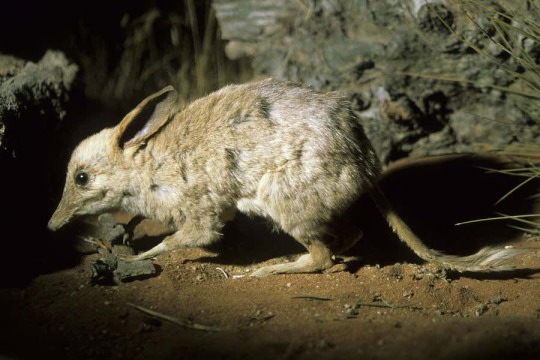
Chaeropus ecaudatus the Southern Pig–footed Bandicoot
Pig–footed bandicoots (genus Chaeropus) were so called because of their hooflike forefeet. They had relatively slender legs compared to other bandicoots, allowing them to move quickly through the landscape.
Although initially designated as a single species, Chaeropus yirratji was split from C. ecaudatus in 2019 on the basis of morphological differences. Both species became extinct by the 1950s due to habitat loss from land clearing for agriculture and predation from cats and foxes.
#southern pig–footed bandicoot#animals#australian animals#mammals#australian mammals#marsupials#australian marsupials#bandicoots#pig–footed bandicoot#s o: australidelphia#o: peramelemorphia#f: chaeropidae#g: chaeropus#sp: c. ecaudatus
32 notes
·
View notes
Text
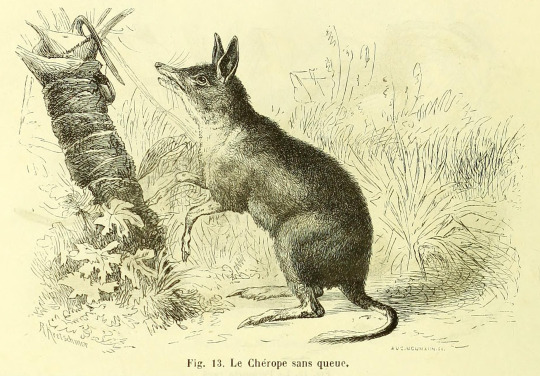
La Vie des Animaux Illustrée. Written by Alfred Brehm. Illustration by Robert Kretschmer. 1869 French edition.
Internet Archive
#recently extinct#mammals#marsupials#bandicoots#pig-footed bandicoots#Robert Kretschmer#googling a new species: :D !!#seeing its extinct: D: !!!!!
77 notes
·
View notes
Text
besides the extinct pig-footed bandicoot there are no hoofed mammals native to australia
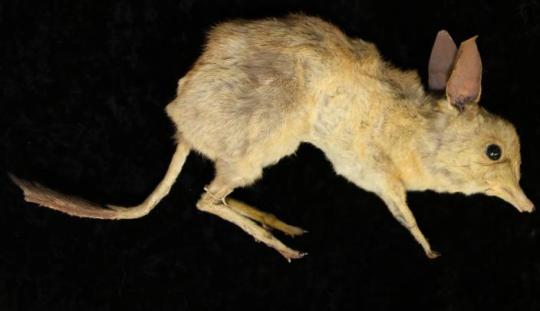

436 notes
·
View notes
Note
🐶🦖🌿
🐶 Are you more of a dog person or a cat person?
I’m a cat person! however the only pet I have is a dog
🦖 Favorite extinct animal?
Pig-Footed Bandicoot! they look really silly and that’s why I like them. They’re also in the more recently extinct side of things as well :]
🌿 Describe your favorite outfit.
Omg okay sooooo I have these really light colored jeans that are like two sizes too big for me and they look baggy which is great, that’s what I want. and then this black rockabilly t shirt that has some slits at the bottom. and then a blue flannel that is also too big for me on top of that, unbuttoned. and some combat boots :]
1 note
·
View note
Text
Crash bandicoot 5

They are easily broken to reveal small pieces of insects and soil. They are 25-50 mm long and 8 mm in diameter. Southern brown bandicoot scats (poo) are firm and cylindrical with a smooth, mud-like surface.
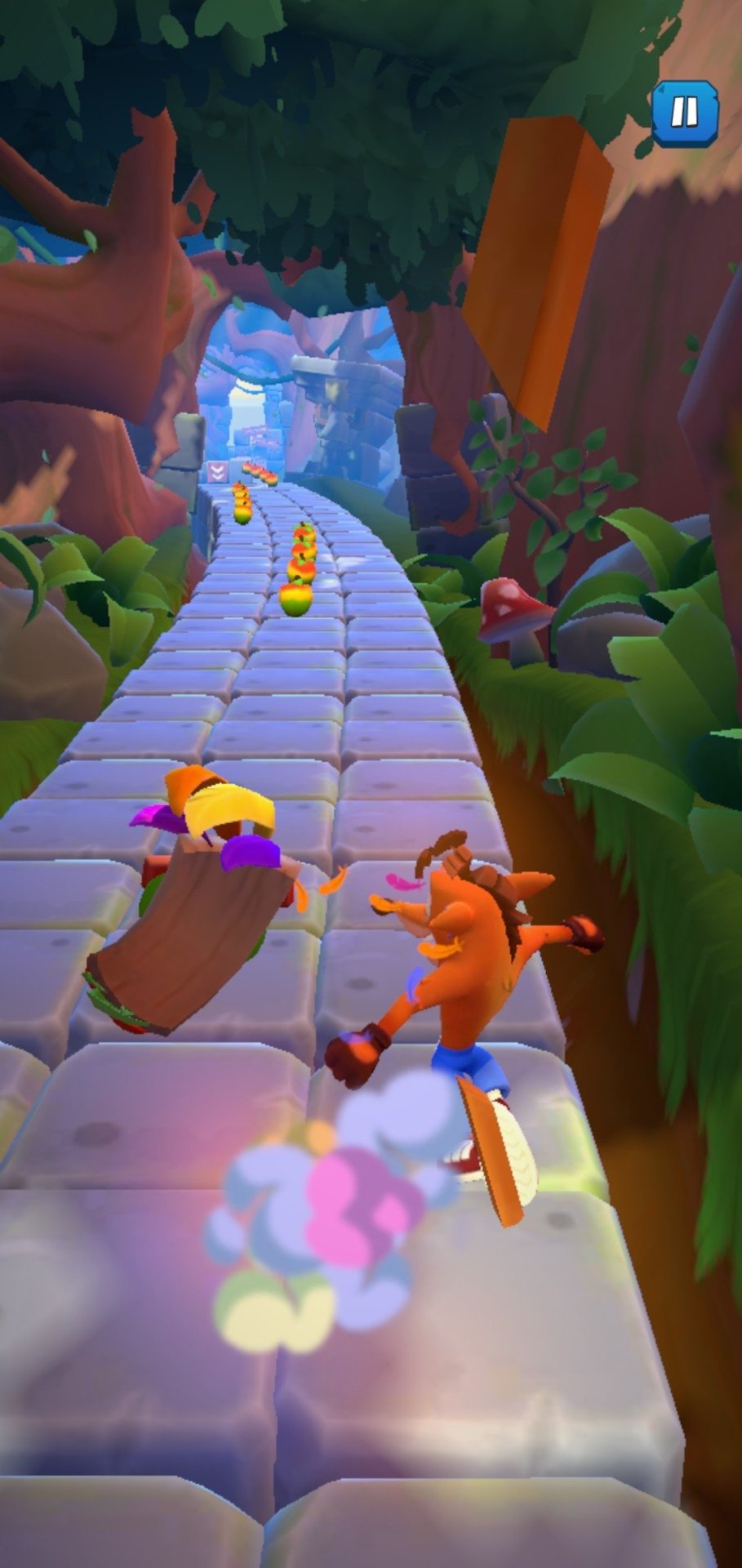
… Names in order: pig-footed bandicoot, short-nosed bandicoot, rabbit-eared bandicoot. It has hind feet with fused toes like those of a kangaroo. It has a sharp, pointed nose with rodent-like teeth. The bandicoot is a rabbit-sized marsupial that gets its name because it resembles both a rat and a pig. According to SuperData Research, the 3D platformer sold 402,000 digital units. Unlike Watch Dogs: Legion which broke franchise records with its digital sales in October, Activision’s Crash Bandicoot 4: It’s About Time saw slightly less success. The supposed release date is some time in November 2021, and it will be released to PS5, Xbox Series X, Switch, PS4, Xbox One, and PC. … All of these can be used to solve puzzles that the game will give us. Inspired by the Los Angeles underground dance music scene of the early ’90s, Pasquale founded Insomniac in 1993.Ī game named Spyro 4: Wings of Fury will be announced at the upcoming SGF. Over the last 25 years, Pasquale Rotella has been known as many things. Who owns Insomniac records?Įxperience creator, businessman, philanthropist, film producer, and night owl. … In 2013, Insomniac entered into a creative partnership with Live Nation. Insomniac is an American electronic music event promoter and music distributor. PlayStation Studios Does Live Nation own insomniac? It is home of six levels and two boss fights. He is a witch doctor spirit living inside a wooden mask who guides Crash, his sister Coco and their friends as they defeat the forces of evil. What is the name of the mask in Crash Bandicoot?Īku Aku is the deuteragonist of the Crash Bandicoot series. Catching the Golden Wumpa will add 200 Wumpa Coins once you finish the race.

Your goal is to chase after and catch them, either by touching it or hitting it with a weapon. Smash it, and a Golden Wumpa Fruit will spawn and shoot up the track. It’s everywhere, and it even has its own drink. It’s the Xbox 360 title that has become the fastest-selling game ever in the US and already made developer Bungie a cool $300 million. Why does Crash Bandicoot look different in Japan?īungie’s shooter grabs the top slot in the Japanese charts, 360 sales also see spike in the region. Sane Movie was released on Januin 2D, 3D, RealD 3D, Dolby Cinema, and IMAX by Universal Pictures in the United States and by Sony Pictures Releasing under Columbia Pictures in other countries. Sanity Island, also known as North Sanity Island and Jungle Island in some documents during the early development of the original game, is the first and most recurring of the three islands, being the home of Crash Bandicoot and his companions (until Crash of the Titans). Just as her older brother, she was genetically engineered through the use of Doctor Neo Cortex’s and Doctor Nitrus Brio’s Evolvo-Ray. Is Coco Crash Bandicoot’s sister?Ĭoco Bandicoot is the younger sister of Crash Bandicoot. “The sound Aku Aku makes is gibberish and was never intended to mean anything,” Dave Baggett, Naughty Dog employee who wrote code for the series, said on a Quora thread. As it turns out, it meant absolutely nothing. Your first guess might be something along the lines of “ ABOOGABOOGA” or “HOLBOGA”. Despite all the rumors and speculation and the hints and the hopes, it doesn’t matter.

Not by any developer - not even Activision- for years to come. A new Crash Bandicoot title will not happen, in any form, anytime soon. After Crash Bash, the exclusivity with Sony ended and Universal made Crash multiplatform with Wrath of Cortex. Sony bought them out and Naughty Dog went on to create Jak & Daxter for Sony. Recent releases were developed by Vicarious Visions and Toys for Bob.Why did Sony sell Crash Bandicoot?Īfter Crash Team Racing, Naughty Dog moved on in order to develop games without being subject to Universal’s constraints. Naughty Dog developed the series between 19. Following a merger in 2007, Activision owns the IP. Who owns the rights of Crash Bandicoot?Ĭrash Bandicoot was originally produced by Universal Interactive, which later became Vivendi Games. Is Crash Bandicoot owned by Nintendo?Ĭrash Bandicoot is now owned by Activision since 2007 and Vicarious Visions currently makes the games. The series was originally produced by Universal Interactive, which later became known as Vivendi Games in 2007, Vivendi merged with Activision, which currently owns and publishes the franchise. You are watching: Who Owns Crash Bandicoot? In Who Owns Crash Bandicoot?

0 notes
Text
†Pig-footed Bandicoots (Chaeropus)
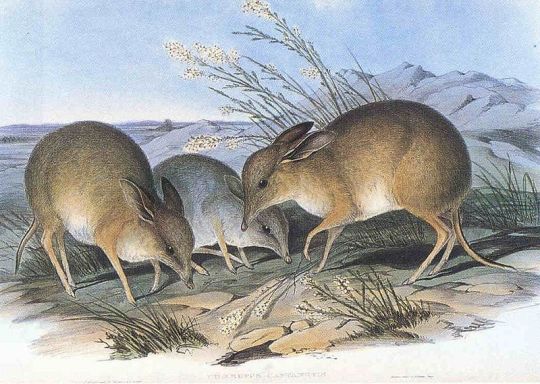
Pig-footed bandicoots were recently considered separate to all other bandicoots. Two similar species are recognized, varying in historical ranges and morphology of dentition and feet. Their fur ranged from uniform grey-brown to russet and fawn tones, helping them camouflage into arid sandy desert and grassland. From 32 to 40cms long, they measured up similarly to a small rabbit.
Chaeropus, uniquely, had feet like tiny hooves. They walked on only two functional toes of the forefeet, and one toe of the hind-foot, the rest being vestigial. They were known to run very fast, with a quick bounding gait. Though reported to eat insects, it’s thought they were largely herbivorous.
The Southern pig-footed bandicoot, C. ecaudatus, occurred through desert shrub-lands in the lower part of South Australia extending into Western Australia. C. yirratji, the Northern pig-footed bandicoot, inhabited grassland and sandy desert in central Australia and WA.
Both species were never prolific according to Indigenous oral tradition. However, they were in serious decline by the 19th century and were extinct less than 150 years after European description. Foxes were not yet established in their ranges, and though some cats were, the cessation of thousands of years traditional burning practices is thought to have been the major contributor to their extinction. Burning provided a patchwork of new growth on which to feed alongside recovered zones of shelter. Introduction of sheep and cattle also changed the landscape dramatically, further decimating crucial food sources of native animals.
#Chaeropus#pig-footed bandicoot#Chaeropodidae#Southern pig-footed bandicoot#Northern pig-footed bandicoot#Chaeropus ecaudatus#Chaeropus yirratji#Peramelemorphia#marsupials#australian animals#australian wildlife#Australidelphia#extinction
57 notes
·
View notes
Photo
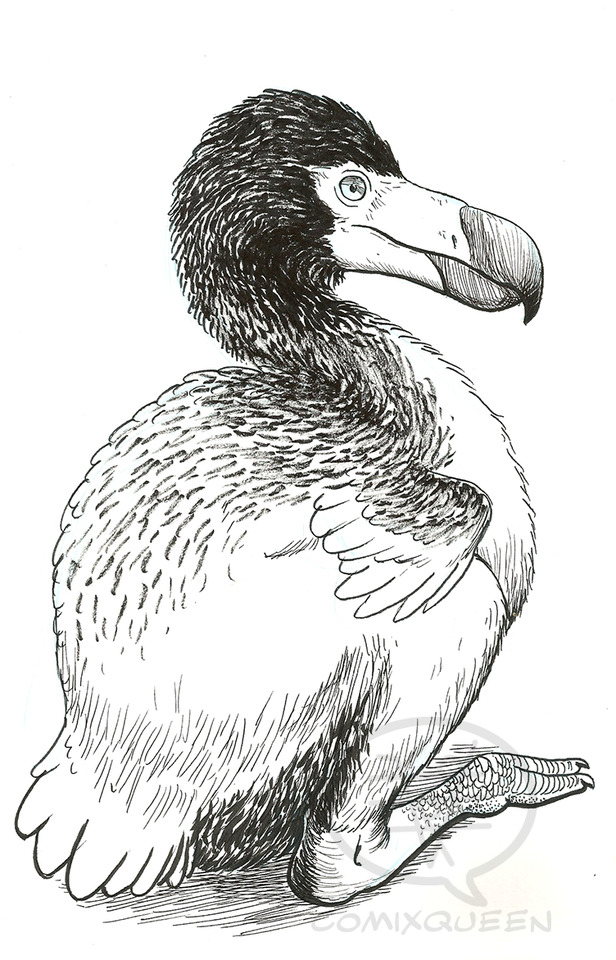



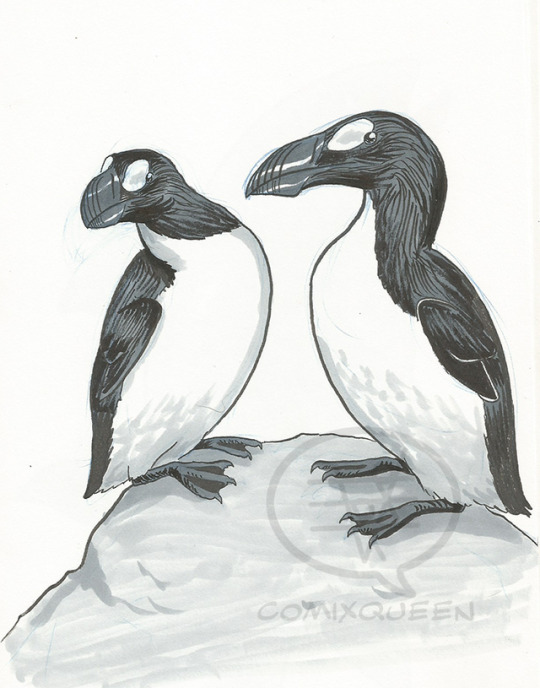
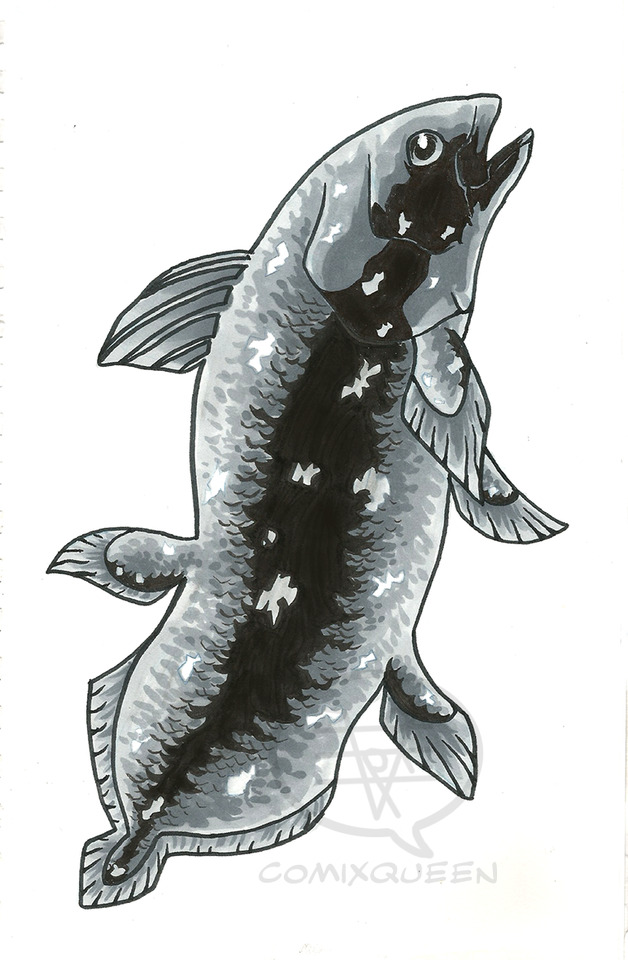



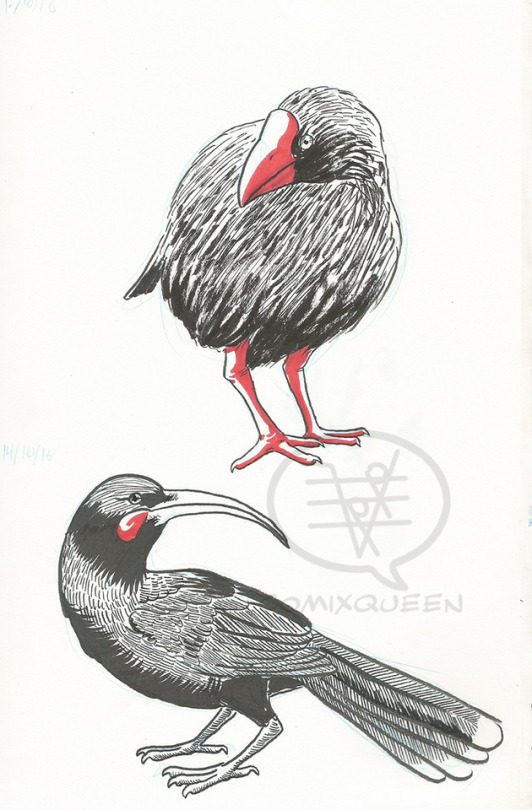
SO turns out I forgot to post my 2016 inktobers here? ;u;
I chose “recently extinct species” as a theme because I wanted to hurt myself I have a morbid love and fascination with these animals I will never see alive. After day 1 it became clear to me that I needed something to keep this project from becoming a sob-fest, so I decided to alternate between recently extinct and Lazarus taxa.
I didn’t finish, as you can see. It’s even obvious where I lost steam haha.
Species list under the cut:
Dodo (Raphus cucullatus) Extinct circa 1662
Cuban Solenodon (Solenodon cubanus) Declared extinct in 1970 but rediscovered in subsequent years.
Steller’s Sea Cow (Hydrodamalis gigas) Extinct since 1768, only 27 years after its discovery by Europeans.
New Caledonian Crested Gecko (Correlophus ciliatus) Thought to be extinct until it was rediscovered in 1994.
Great Auk (Pinguinus impennis) Extinct circa 1844 when the last breeding pair was killed on the island of Eldey.
West Indian Coelacanth (Latimeria chalumnae). Coelacanths were thought to have gone extinct in the Late Cretaceous, but were accidentally rediscovered in 1938.
Pig-footed Bandicoot (Chaeropus ecaudatus) Extinct sometime in the 1950s.
Laotian Rock Rat or Kha-nyou (Laonastes aenigmamus) Considered to be distinct from all living rodents, its closest relatives went extinct in the Miocene, 11 million years ago.
Quagga (Equus quagga quagga) The last captive specimen died in 1883.
Forest Owlet (Athene blewitti) Not seen after 1884 and considered extinct until it was rediscovered in 1997.
Laughing Owl (Sceloglaux albifaces) Extinct circa 1914.
Takahē (Porphyrio hochstetteri) Thought extinct in 1898, rediscovered in 1948.
Huia (Heteralocha acutirostris) Depicted here is a female. Last official, confirmed sighting was made December 28th, 1907.
#art#inktober#inktober 2016#inktober2016#extinct animals#extinct species#lazarus taxa#lazarus species#dodo#solenodon#cuban solenodon#steller's sea cow#crested gecko#new caledonian crested gecko#great auk#coelacanth#west indian coelacanth#pig-footed bandicoot#laotian rock rat#kha-nyou#quagga#forest owlet#laughing owl#takahe#takahē#huia
297 notes
·
View notes
Photo
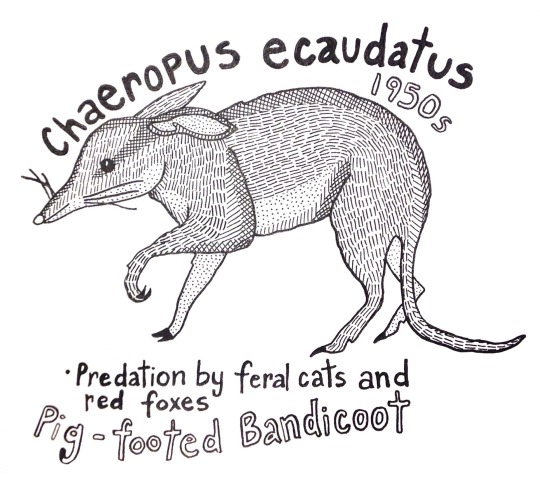
3 notes
·
View notes
Text
Multiple new cryptic species of bilby, and a case of mistaken identity among bandicoots leading to an accidental introduction:
Even after the catastrophic debacle of introducing non-native cane toads, European rabbits, foxes, dromedary camels, feral cats, and invasive invertebrates, Australian settler institutions are cursed with mistakes which unleash invasive animals even when attempting the well-meaning reintroduction of native species.
Some new research from 2018 revealed an alarming mistake in ecological management. Basically, you’ve got this cute little bilby from the remote far western coast near Shark Bay which was transported by scientists thousands of kilometers and now has a big strong population just chilling near Adelaide. Bilbies, or bandicoots, are understood to be important to maintaining healthy soils, especially in Mediterranean chaparral zone and the other climatically mild and temperate regions of the coast of southern Australia (ranging between Perth through Adelaide to the Melbourne area, and including Tasmania), so there is popular celebration of the reintroduction of bandicoots to environments which they historically inhabited before European agriculture and invasive species led to local extinction of many bandicoots. The western barred bandicoot (Perameles bougainville) went extinct across almost all of its range and disappeared from native habitats on the mainland after European invasion, but a few populations survived on extremely remote islands off the coast of Shark Bay in on the far western coast of Western Australia. Intending to help rehabilitate native soils and plant communities, Australian settler ecologists then took some bandicoots from Shark Bay islands and “reintroduced” the western barred bandicoot over 3000 kilometers away at the Arid Recovery Reserve, near Lake Torrens area north of Adelaide. This was done because settler scientists thought that this bandicoot species had historically lived across much of southern Australia. Uh oh: It turns out that this western barred bandicoot lineage was historically only native to a small portion of the western coast of Australia near Shark Bay far, far away and was never native to the Adelaide or Lake Torrens area, because what was assumed to be the “western barred bandicoot” was actually 5 different cryptic species. 4 of these species are now extinct. The only living member of this bandicoot lineage remains only at Shark Bay. But now, these Shark Bay bandicoots are living north of Adelaide, where a couple thousand of them live at Arid Recovery Reserve.

A western barred bandicoot from the coastal Western Australia population at the islands of Bernier and Dorre:

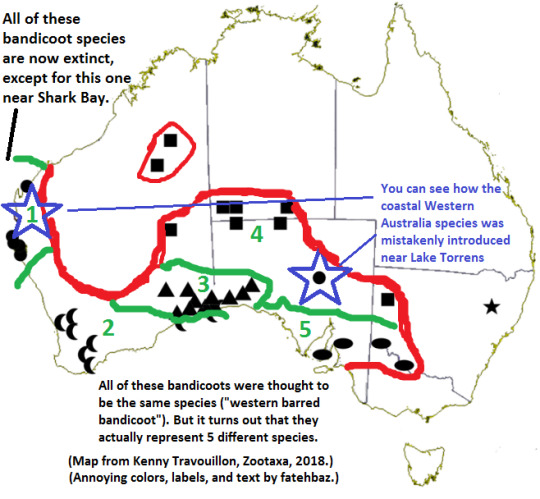
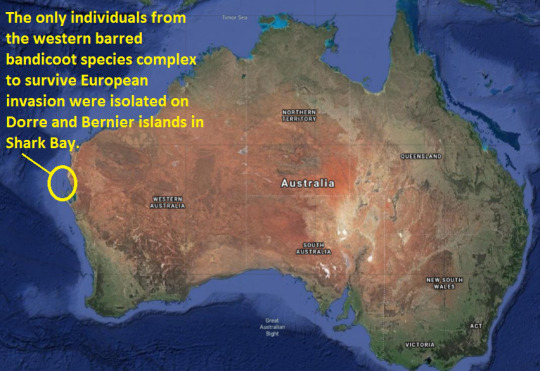
Kenny Travouillon, the lead researcher who reported the cryptic species and new understanding of bandicoot biodiversity, was featured recently in this report from Western Australian Museum, February 2018:

“For example, many people will have seen the Quenda (Isoodon obesulus fusciventer), a bandicoot familiar to Perth backyards. For more than 150 years the Quenda had been thought to be a subspecies of the Southern Brown Bandicoot (Isoodon obesulus) from the east coast of Australia, when in fact our research shows that it is a distinct species and more closely related to the Golden Bandicoot (Isoodon auratus) endemic to WA and found on Barrow Island and throughout the Kimberley.”
“We also re-evaluated the Western Barred Bandicoot (Perameles bougainville), a species now only found on islands near Shark Bay, and we found that it is in fact a complex of five distinct species. Four of these species had been named in the 1800s, but we described a new species from the Nullarbor region, the Butterfly Bandicoot or Nullarbor Barred Bandicoot (Perameles papillon). This is a new species that went extinct between 1920 and 1960, as a result of feral carnivores spreading west,” he said.
Four of the eight bandicoots that once lived in in WA are now extinct: the Pig-footed Bandicoot (Chaeropus ecaudatus), the Desert Bandicoot (Perameles eremiana), the Marl Bandicoot (Perameles myosuros) and the Butterfly Bandicoot (Perameles papillon). The four that remain are the Quenda (Isoodon fusciventer, previously known as the Southern Brown Bandicoot), Northern Brown Bandicoot (Isoodon macrourus), Golden Bandicoot (Isoodon auratus), and the Little Marl (Perameles bougainville), which was previously known as the Western Barred Bandicoot. [End of excerpt.]
Here’s a story on how the confusion has resulted in a non-native bandicoot species being reintroduced where it didn’t belong:


An endangered Australian bandicoot that was reintroduced to the Australian mainland is now believed to be one of five distinct species, and researchers say it may have been a mistake to introduce it to South Australia.
Scientists working for the Western Australian Museum have published research that concludes that what has been known as the western barred bandicoot is in fact five distinct species – four of which had become extinct by the 1940s as a result of agriculture and introduced predators. The species were closely related but occurred in different parts of Australia.
In the 2000s, western barred bandicoots that had survived on the arid Bernier and Dorre islands off Western Australia were reintroduced to the mainland, including to a predator-proof reserve in outback South Australia. But the new study shows the surviving species that was translocated to that part of the country would never have occurred there previously. Lead researcher Dr Kenny Travouillon made the findings after analysing skulls and DNA from tissue from specimens held in collections in Paris and London.He said the research, which was published in Zootaxa, came to the conclusion that the western barred bandicoot was the only remaining species of the five.
The species that has been reintroduced around Australia would have originally occurred only in parts of Western Australia. “On the mainland, that species should have only been in WA along the coast from Shark Bay to Onslow,” he said. “They should never have been brought to South Australia, but that decision was made from the old research.” Dr Kath Tuft, the general manager of the Arid Recovery Reserve in South Australia, said there were now as many as 2,000 western barred bandicoots at the reserve. She said what had been considered a reintroduction of the species was now technically an introduction. [End of excerpt.]
-----
Important distinction: There is another celebrated - and more successful - bandicoot reintroduction project involving a different species.
The eastern barred bandicoot (Perameles gunnii) lives on Tasmania and on the mainland in southern Victoria near Melbourne. The population that once inhabited mainland ecosystems almost went entirely extinct, but there are multiple successful reintroduction sites in Victoria and a captive breeding program.
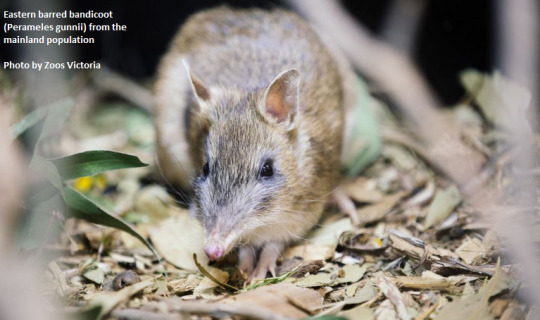
The species also lives on Tasmania, but here are the reintroduction sites on the mainland near Melbourne [map from the species recovery plan, State Government Victoria]:
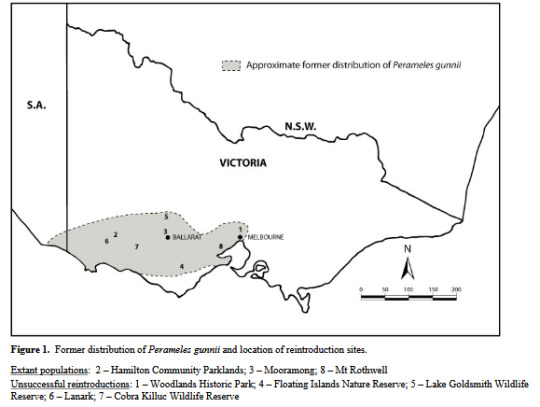
This bandicoot species does belong in mainland southern Australia.
11 notes
·
View notes
Text
Crash Bandicoot Game Idea
In the planning stages of the original Crash Bandicoot, Naughty Dog had the idea to implement an unlockable bonus game inspired by one of their earlier titles: a fighting game! Sadly, this was not to be.
And seeing how Crash didn’t get to be in Playstation All-Stars Battle Royale either, it got me thinking about what a Crash Bandicoot fighting game would be like. So here’s what I’ve written down so far for my idea, Crash Clash!
Ever since the birth of his video game career, Crash Bandicoot has secretly dreamed of being in a fighting game. After getting snubbed by one tournament too many, however, Crash has decided to take matters into his own furry hands and start one of his own! No holds barred, anything and everything goes, and the champion wins the title of “World's Best Fighter”! Soon, word gets out about Crash's tournament, and now everyone in the world is invested in what has become much bigger than what Crash was anticipating. Even Dr. Cortex and his minions show interest in the goings on, and they may even take advantage of all the media attention Crash's tournament is getting...!
THE ROSTER
Crash Bandicoot
Our hero, he's in charge of the tournament as well as a competitor! Crash has good stats all around and has medium weight... your most basic fighter with no outstanding strengths or weaknesses. Crash utilizes punches, kicks, belly flops, and of course spin attacks to put the smackdown on his opponents.
Coco Bandicoot
Crash's little sister is a martial arts master, particularly fearsome for her kicks and chops. And just like non-mutant bandicoots, she can flip her opponents over and slam them into the ground! Coco isn't quite as strong as her brother, but she does move faster, and is a bit lighter as well. She wants to bring a whole new definition to “fight like a girl”!
Crunch Bandicoot
Our favorite musclebound marsupial with a prosthetic arm that hits like a freight train! Crunch doesn't like hurting people, but he's glad for the opportunity to show off his strength. He utilizes wrestling moves to take down his opponents, as well as punches and kicks.
Dr. Neo Cortex
Wherever Crash is, Cortex is sadly not too far behind. The bad doctor knows he's quite physically weak compared to everyone else in the tournament, which is why he's packing multiple weapons, including his trusty ray gun! He's also equipped with special armor to increase his defense, including a helmet for his massive noggin.
Nitrus Brio
Cortex's former colleague wants to prove himself worthy for a change, so thanks to his trusty mutagen formula, N. Brio changes into his monster form to kick butt and take names! Monster Brio is pure brute strength, clobbering opponents with his fists and crushing them in his bulky arms. It'll take more than jumping on his head to stop him this time...
N. Gin
Guess who built a mech suit for himself just to participate in this tournament? Yup, N. Gin did! It's not as big or explosive as his previous ones; it's just big and durable enough to give him the strength and protection he needs to take out even the biggest opponents. It's even outfitted with lasers and small missiles!
Nefarious Tropy
N. Tropy relies heavily on his giant tuning fork to best his opponents, whether zapping them with energy blasts or smacking them hard with its hefty weight. He also uses his time warping powers to teleport and avoid getting hit back. The armor he always wears provides him with plenty of defense as well.
N. Trance
This egg-like being from the 5th Dimension can stun his opponents with hypnotic blasts, as well as temporarily grow in size to crush them, or float to avoid them. However, being egg-like, his defenses are kind of pitiful.
Nina Cortex
Not willing to let Coco have a chance to be the World's Best Fighter, Nina has entered the ring just to spite her blonde rival. Like Crash, Nina uses spin attacks as one of her offensive techniques, but she also has long-reaching, hard-hitting punches thanks to her bionic metal hands.
Ripper Roo
Hopping, biting, kicking, and scratching with his razor-sharp toenails are Ripper Roo's secrets to success in the ring. He also somehow carries explosives with him, which he plants as he pleases around the arena or on his opponent.
Koala Kong
Aside from punching and crushing his opponents, Koala Kong seems to have a never-ending supply of heavy objects to throw at them as well! Where does it all come from? Who knows!? Does everything have to make sense in the world of Crash Bandicoot!?
Pinstripe Potoroo
Pinstripe was forced to put away his tommy gun for Crash's tournament, as actual bullets are kind of a no-no in family-friendly fighting games. Thankfully, Pinstripe is perfectly fine with good-old-fashioned beatdowns! Doffing his jacket and tailored shirt to reveal a white undershirt, Pinstripe primarily uses boxing techniques to make his opponents eat dirt.
The Komodo Brothers
Komodo Joe and Komodo Moe fight as a team, swords a-swinging! Knock one of the brothers out, and the other one is left almost defenseless. Joe is lighter than Moe, the latter of whom is a heavyweight. Try targeting one brother at a time if you want to get past them!
Tiny Tiger
Crushing, clawing, and biting his opponents makes Tiny a happy Tasmanian Tiger. He's especially eager to put the hurt on the bandicoots.
Dingodile
Slow-moving and heavy, but pretty dangerous nonetheless. Dingodile will blast you with his flamethrower, smack you with his tail, and bite you with his sharp teeth if you manage to get too close. He may not have a lot of muscle, but his bulk and firepower are not to be underestimated.
Fake Crash
As always, Fake Crash wants to prove his might against the real Crash. His fighting style is similar to that of the real Crash, but with a twist that makes it seem “drunken” and unpredictable in style. Fake Crash's moves are just a little bit stronger than the real deal's, but he moves somewhat slower, too.
Papu Papu
Our favorite native chief can bonk the daylights out of you with his club, bounce you backwards with his massive stomach, or use magic to summon small clones of his opponent to do his dirty work. Papu Papu is as strong as he is heavy, so watch out!
Penta Penguin
Small, fast, and light, Penta can easily dodge many a blow from an opponent. However, this also means he can be easily knocked out... assuming you can get past his spin attacks, flips, and belly slides.
Baby T
Baby T is finally putting his sharp teeth to good use, as well as his powerful legs and foot claws. He can also headbutt his opponents, often charging the attack first before sprinting forward. Be careful that he doesn't fling himself out of the ring when he does this!
Tawna Bandicoot
How can Tawna possibly say no to the opportunity to kick some booty in a fighting tournament? She uses kickboxing to beat down her opponents, and is all too eager to use everything she knows against a certain evil scientist...
Yaya Panda
Formerly a kart racer in two different mobile circuits, Yaya has decided to return to her first true love: kung fu! She's sort of a shadow of Coco, but has far superior stats to the bandicoot, moving faster and hitting harder. So... maybe Coco is really a shadow of Yaya?
NEW CHARACTER: Porkbelly
This huge mutant warthog is highly disciplined in the art of sumo wrestling, and has a fearsome and oftentimes reckless personality. It is unknown which scientist mutated Porkbelly, but he doesn't seem to have any loyalties towards anyone, anyhow. He's just a very big pig with a very big belly, and an even bigger competitive streak.
... And that’s all I’ve written so far. I want to add more characters and come up with different modes and mechanics, but I’m not sure if I can focus long enough to do that. If anyone has any ideas of their own to add, let me know!
7 notes
·
View notes
Text
The Extinct Species Graveyard at the Bronx Zoo’s BOO AT THE ZOO Event was fascinating–and sad.
Nathan and I love to visit the Bronx Zoo, which is just about an hour from our house—it’s like being on vacation for a day, and it could be said the zoo is part of our lives (we’ve “financially adopted” many of their animals over the years, everything from a bat to a Madagascar Hissing Cockroach we named Mountain King). Since we’re members, we try to make it down for the zoo’s special events throughout the year.
October brought Boo at the Zoo: weekends full of activities such as a beer garden, pumpkin carving demonstration, not-really hay rides, marshmallow roasting pits, candy trails, a corn maze—and my favorite, a Haunted Forest in the abandoned World of Darkness Building. Little known fact about me? It was my first-ever walk-through Haunted House, and I did pretty well!
It was lots of fun to see kids in costume.
Look who I ran into in New York City!
…and to visit our hissing cockroach, Mountain King.
My Valentine’s Day Gift to Nathan
Check out Mountain King! He is clearly aptly named. Look how large he is compared to the others, and a spectacular gold color (which you can’t really see in this terrible light).
The exhibit that struck me most was the Extinct Species Graveyard, which was set up in a little-used grove of trees next to The Mouse House. It wasn’t there for a Halloween thrill, nor was it there as just another decoration to fill up space; it seemed part educational, and part memorial. I was surprised by the profound sense of sadness I felt as we wandered through the headstones.
Here’s a tour!
The graveyard was located on a perfect, flat, shady — and unused the rest of the year — spot next to The Mouse House.
The area where this was set up made it feel real.
Officially discovered in the late 1600s, the Falkland Islands Wolf’s tame nature spelled its doom—it hadn’t learned to fear humans, so settlers could easily trick it into coming close enough to kill it. They were hunted for meat and fur, and were considered threatening to sheep. The last one was killed in West Falkland in 1876. For a thorough history (that looks to be well-researched—loads of legitimate sources, here), visit http://messybeast.com/extinct/warrah.htm
Passenger Pigeons were abundant in the 19th century, and tales of their titanic flocks—they took over entire forests, appeared thick as waterfalls, and left entire towns blanketed in feces—are just plain hard to believe. They were basically hunted out of extinction, both for their meat by starving frontiersman, and because they were a nuisance: they competed with farm animals for foodstuffs, among other things. Once the railroads came into being, there was no stopping hunters and trappers from sporting these animals right out of existence. The last known Passenger Pigeon’s name was the Cincinnati Zoo’s Martha, and she died in September of 1914. For more information, check out Audubon’s “Why the Passenger Pigeon Went Extinct” here: http://www.audubon.org/magazine/may-june-2014/why-passenger-pigeon-went-extinct
The Tasmanian Tiger was killed off on the Australian mainland by widespread hunting, but survived on Tasmania until the last one died in a zoo in the 1930s. Australians haven’t given up on the hope that this thylacine is still alive, however—to this day, reports of sightings are frequent, and even a recent episode of Expedition Unknown had Josh Gates out hunting for it. Initially, scientists had proposed many theories for the creature’s extinction on Tasmania, although there is new evidence to suggest that it was a changing climate that was the culprit http://www.telegraph.co.uk/news/2017/09/28/mystery-disappeared-tasmanian-tiger-finally-solved/.
The story of the last authenticated Labrador Duck’s demise is rather sad http://www.chemunghistory.com/pages/labradorduck.html, but literally, almost nothing is known about this bird—its breeding was done in such remote areas (it’s suspected way up in Greenland) that it died out almost before we noticed. Apparently once prevalent on Long Island Sound, we do know, thanks to a journal called Arctic Zoology in 1785, that a specimen was sent from Connecticut to England (see where I got this from here: https://birdsna.org/Species-Account/bna/species/labduc/introduction). Not very exciting, but there is one ornithologist who made it his mission to visit every single specimen (there are 55) left in existence, which he details in his book The Curse of the Labrador Duck. https://www.smithsonianmag.com/science-nature/the-curse-of-the-labrador-duck-16641319/
Probably the poster child for extinction, the Dodo Bird has something in common with the Falkland Island Wolf—it had no fear of humans, because it had never had to fear anything before. Although it’s widely held that sailors arriving on the island of Mauritius, near Madagascar, hunted them and ate their eggs, another theory suggests that it was the cats, rats, pigs and other animals the sailors brought with them went feral. Read more in a Forbes Magazine Quora reprint, “What Happened to the Last Dodo Bird?” here. https://www.forbes.com/sites/quora/2016/09/20/what-happened-to-the-last-dodo-bird/#2eb2d48e9c2b
The Pig-footed Bandicoot, an adorable little Australian marsupial, is believed to have not survived the introduction of European cattle, as that would’ve cause a major change to the environment and the availability of food. Although the last verified individual was seen in the early 1900s, there’s photographic, video and audio evidence to suggest the creature may still be alive and well…sounds a little far-fetched to me, but judge for yourself: http://www.sciencemag.org/news/2007/04/pig-footed-bandicoot-rises-dead
Related to today’s manatees and dugongs, Steller’s Sea Cow, indigenous to the northern Pacific, were hunted to extinction in the 1700s by Russian and European fur traders. Another theory floating around out there attributes the final blow for this species to the stress on the sea otter population which caused a rise in sea urchins which caused a depletion of kelp—the Steller’s main foodstuff. More information here: https://www.theatlantic.com/science/archive/2017/04/pleistoseacow/522831/
The Golden Toad lived in Costa Rica’s Monteverde Cloud Forest and was declared officially extinct in 2004. This animal was unique in that males were a dazzling orange, but the females came in many different colors, among them yellow and green. For a long time it was thought that global warming killed these stunning animals, but now they think it might’ve been a fungus: http://www.sciencemag.org/news/2010/03/global-warming-didnt-kill-golden-toad
In another case of “we didn’t realize what we were doing,” the Quagga, which was indigenous to South Africa, died out in the late 1800s. Like many other animals of the plains, they were ruthlessly hunted—they were regarded as competitors for the same food as sheep and goats. What’s come to light is that they were not a separate species of zebra, but a subspecies of the zebra we all know and love. There is a revival project going on in South Africa, which you can read more about here: https://quaggaproject.org/
The Greak Auk—which I’ve seen referred to as “the original penguin”—was scattered all over the northern Atlantic, and was exploited for its eggs, feathers, oil, and fat. Archeological finds also suggest that it was important to ancient maritime peoples. The saddest story, though, is the one of the crew of a ship which tied the bird’s feet together and attempted to take it home. When a violent storm hit, the sailors were certain it was the work of the “devil bird” they’d brought on board, so they stoned it to death. An extensive history in Smithsonian Magazine’s “When the Last of the Great Auks Died, It Was by the Crush of a Fisherman’s Boot,” here: https://www.smithsonianmag.com/smithsonian-institution/with-crush-fisherman-boot-the-last-great-auks-died-180951982/
The Carolina Parakeet’s story is especially tragic, because it was the only species of parrot native to the United States. The last known wild specimen was killed in 1904, and the last captive one died in a zoo in 1918. This bird had a few causes of death: habitat loss, the pet and fashion trades, and farming. There’s a pretty extensive discussion in Audubon’s “The Last Carolina Parakeet” here: http://johnjames.audubon.org/last-carolina-parakeet
I’ve always had an affinity for toads, so here I played around with getting a selfie. Not great.
Me and the toad’s ass. Nathan took this one.
Nathan loves the Tasmanian Tiger. So this is the one he chose to pose with.
The Bronx Zoo’s Extinct Species Graveyard Nathan and I love to visit the Bronx Zoo, which is just about an hour from our house—it’s like being on vacation for a day, and it could be said the zoo is part of our lives (we’ve “financially adopted” many of their animals over the years, everything from a bat to a Madagascar Hissing Cockroach we named Mountain King).
#Boo at the Zoo#Carolina Parakeet#Dodo Bird#extinct species list#Falkland Islands Wolf#Golden Toad#Great Auk#Halloween events in New York City#Labrador Duck#Madagascar Hissing Cockroaches#Passenger Pigeon#Pig-footed Bandicoot#Quagga#Steller’s Sea Cow#Tasmanian Tiger#The Bronx Zoo#where can the kids go to dress up in costumes in New York
1 note
·
View note
Text
Crash Bandicoot For Mac Software
On this page you can download Crash Bandicoot N. Sane Trilogy (2018) for Mac OS X! Full version of game Crash Bandicoot N. Sane Trilogy MAC Download Free. About This Game: Your favorite marsupial, Crash Bandicoot™, is back! He’s enhanced, entranced and ready-to-dance with the N. Sane Trilogy game collection. Download, Install, and Play Crash Bandicoot: On the Run! On your Windows PC or MAC with mobile app emulators for free. Download & Install Bluestacks. Alternatively, you can use Memu or Nox. Register new or connect your old Gmail/Google Play account.
Crash Bandicoot For Mac Software Free
Crash Bandicoot For Mac Software Windows 10
Candy Crush creator King has announced that a Crash Bandicoot iPhone game is coming in the spring, and you can pre-register now. A video trailer can be seen below.
Crash Bandicoot was one of the most popular PlayStation 1 games of all time, selling over 40 million copies, and has just been revived for both PlayStation 4 and Xbox One …
The latest console version is Crash Bandicoot 4: It’s About Time, launched at the beginning of the month. The iOS and Android game will be called Crash Bandicoot: On The Run!
Mobile developer King revealed back in July that the endless runner game was in the works, but gave no timescale at the time. It has now said only ‘spring 2021,’ but that’s at least better than nothing.
Everyone’s favorite marsupial is getting ready to run, jump and spin onto mobile in Crash Bandicoot: On the Run!. Running faster, fearlessly and further than ever before, this brand-new mobile adventure brings the best of the Crash Bandicoot franchise from the last 20 years with fan-favorite characters, bosses, moves, mischief and mayhem.
“We’re really excited to bring this well-known and much-loved franchise back to mobile,” said Stephen Jarrett, VP of Game Design at King, and Creative Lead on Crash Bandicoot: On the Run!. “Our ambition is to transform the runner experience with classic Crash gameplay, while adding depth and progression through a variety of exciting features including meaningful social, crafting and base building. Drawing inspiration from Crash’s vibrant history we plan to bring back classic characters, bosses, enemies and lands and wrap them in a brand-new adventure for gamers to play on the go.”
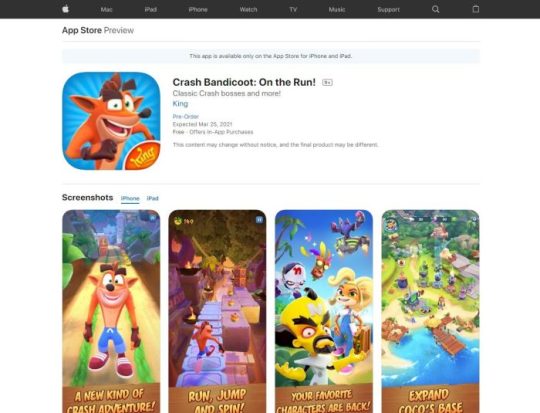
In Crash Bandicoot: On the Run!, the dastardly Dr. Neo Cortex has returned to take control of the multiverse, with the help of his maniacal mutagen henchmen. Only Crash and his sister Coco can save the day and put a stop to their plans. Video game fans will immediately recognize regions from previous Crash Bandicoot games, such as Temple Ruins, Turtle Woods, Bear It and more.
Engadget notes that the mobile version will include one of the trickiest levels from the PlayStation game.
The game is an endless runner, which will also have weapons crafting and base-building on the go. It features characters aside from Crash that fans already know and love (or hate), including Coco, the goofy-looking Fake Crash and our hero’s nemesis Neo Cortex. You’ll have to defeat Neo Cortex in the Lab, which is one of the franchise’s most notoriously difficult levels.
Crash Bandicoot: On The Run! will be a free download with in-app purchases. You can pre-order it from the App Store, with King throwing in a freebie by way of encouragement.
Any player that pre-registers will receive an exclusive Blue Hyena Skin on launch day – a fun and exotic skin which fans may remember from Crash Team Racing: Nitro Fueled.
Crash Bandicoot For Mac Software Free
Check out the Crash Bandicoot iPhone trailer below.
FTC: We use income earning auto affiliate links.More.
To most folks, the bandicoot is just a silly looking marsupial that lives in the Australian outback. To PlayStation owners, however, the tiny critter is a spinning, pants-wearing bundle of red fur and attitude that just happens to be the next big thing for Sony's 32-Bit system.
And this next big thing's name is Crash Bandicoot, whose self-titled game is one of the most highly anticipated second-generation next-gen titles to come along for the PlayStation. The game is slated for a September release, and the mounting anticipation surrounding it is understandable; Crash Bandicoot is, without a doubt, the best-looking title to come out for the PlayStation ever. Its graphics are crisp, colorful, and-for lack of a better term-just plain awesome. (Check out the side-bar for info on why the game looks so great.) In fact, the game's stunning visuals have prompted many Crash-playing EGM staff members to wonder if they were watching a cinema rather than the game itself.
But does Crash Bandicoot play like a cinema? No. It has gameplay guts to go with its visual glory. Although Crash's attacks are pretty standard stuff (he leaps on and spins into enemies) the game is packed with a variety of levels, many requiring a different type of play style. It offers forward-scrolling stages, sidescrolling stages-even two stages that tax Crash's beast-riding skills!
The majority of the game is played in a third-person perspective, with you looking over the furry head of the pouched-reared protagonist as he zips head-on through each stage. And Crash has more than his fair share of obstacles to avoid during his quest to rescue his girlfriend. Most levels have Crash making a mad dash through the jungle, which is packed from tree to shining tree with bottomless pits and angry animals. Crash must contend with rogue skunks, bandicoot eating plants, bloodthirsty bats, vicious villagers and other terrors of the jungle.
Not all the animals are against Crash, however. Later in the game, the bandicoot will climb aboard his trusty wild boar and haul butt through the greenery. The squealing sow only has two speeds-fast and faster-and Crash must clutch to the critter and steer him around and over traps and pits. Some chasms are too wide to clear in one jump, but big bongo drums lie before these pits and give the pig a boost of leaping power. Crash will also have to avoid spiked posts, barbecue pits and shield-wielding villagers that cross his pig's path.
But the hog-riding levels aren't the only ones laden with traps. Giant stone rollers lumber onto the road in front of Crash during his on-foot adventures, and Crash can only cross some chasms by vaulting onto support columns that drop from under the hero's feet if he wastes too much time planning his next leap.
Not all of the game's levels-and traps-are landlocked; some stages send Crash careening along a rock- and log-strewn stream. Here the bandicoot must deal with hungry fish and even hungrier plant life. But the water levels' real challenge lies in guiding the bandicoot through the wet-and-wild obstacles. The only route Crash can follow downstream is across slippery logs and onto moving lily pads. One badly aimed leap will land Crash in the drink, all wet and all dead.
These water-logged levels are perhaps the game's most visually stunning stages. Crash's falls into the stream are rewarded with realistic splashes, and the waterfalls that Crash must occasionally scramble over look straight from a postcard.
Other levels reverse the player's perspective and send Crash cruising in your direction, toward the television screen. For instance, several Indiana Jones-inspired stages have Crash running in front of huge rolling boulders that pursue the hero. One false step and Crash is road kill. These backward-scrolling levels are extra tough because you can't see the obstacles that lie in front of Crash until they're nearly under his feet. Jumping across chasms becomes especially difficult, since you can't see their far sides. Still other levels are played in the traditional side-scroller fashion, with Crash running and jumping his way over gaps and past traps that lie along his path.
The visual quality of these levels doesn't degrade just because the player perspective has changed; they're rendered in the same crisp 3-D graphics that make the game so spectacular. Later levels mix both side- and forward-scrolling perspectives, with Crash dashing left or right for a while, then plunging straight into the jungle or a cavernous ruin.
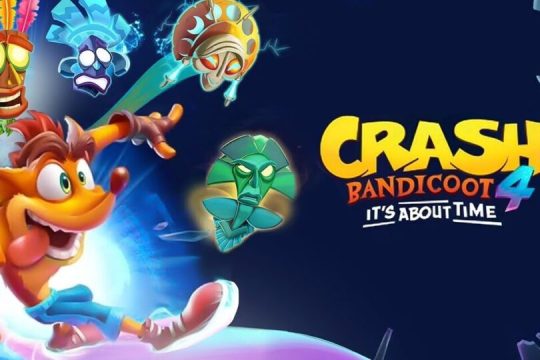
Crash's adventure takes him to three islands, all containing a total of more than 30 stages. Besides the jungle locales, he'll also wander inside and outside of ancient ruins and storm his nemesis' castle.
Gamers are guaranteed to reach 26 levels when they play through Crash Bandicoot, but chances are they'll stumble across a slew of bonus rounds. The key to reaching these rounds lies in the crates that Crash can bust open as he hauls butt through the game. Most crates are full of fruit that the bandicoot can collect for extra lives, while others contain voodoo masks that make Crash invincible if he collects three of them.
But a few crates house bonus-level heads. Collect three of these and Crash will cruise to one of the game's three types of bonus rounds. For instance, collect three Tawna heads and Crash will be sent to her bonus level. Here Crash can load up on fruit, voodoo masks and lives--and you can save your game if you reach the end of the level. Later in the game, Crash can also collect Dr. Brio and Dr. Cortex heads and be sent to their respective bonus levels. Brio's levels are chock-full of extra lives, while players will find two keys in Cortex's stages. These keys grant access to two super-secret bonus rounds that can be found early in the game.
The crates themselves also open up bonus levels. If Crash finds and smashes every crate in a level without losing a life, he'll be awarded a gem at the end of the stage. These crystals unlock special gem levels that Crash can uncover throughout the game. Some gem levels can only be accessed once Crash clears a level later on in his adventure. This need to revisit early stages to find new bonus levels adds tremendous replay value to the game.
Crash Bandicoot is a tent-pole product for several companies, namely Sony. Universal Studios Interactive and Naughty Dog Inc., all of which became caught up in the game's development at one point or another.
Naughty Dog began putting the game t together nearly two years ago, with the intention that Universal would help tweak and distribute the title. Then Sony took notice of the game and saw what could potentially be the company's Mario 64 killer. So the folks behind the PlayStation signed on to publish and distribute Crash Bandicoot.
But does Crash have what it takes to take on Nintendo's--as well as Sega's--juggernaut mascots and become king of the next-gen jungle? That remains to be seen. Crash's graphics and game-play will certainly give the little bandicoot a fighting chance.

Crash Bandicoot For Mac Software Windows 10
Overall rating: 9.5
0 notes
Photo
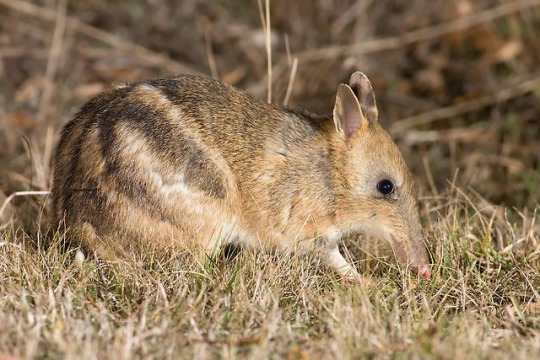
An extinct relative of bandicoots, the Pig Footed Bandicoot, was one of the only non-ungulate species to evolve hooves! via /r/Awwducational https://ift.tt/2KnmxTP https://ift.tt/2Knr9Ju
0 notes
Text
Australia’s platypus under threat from climate change
Prolonged drought and other effects of climate change are pushing the duck-billed platypus, one of Australia’s most unique species, towards extinction, scientists warned in a study published Monday.
The furry river-dwelling mammal has already disappeared from as much as 40 percent of its historical range on the east coast of Australia due to drought, land clearing, pollution and the construction of dams, the researchers said.
More:
Lessons on fire from Australia’s indigenous people
‘A shape in the ash’: Bushfires destroy Australian wildlife
The last decade was hottest-ever and more extreme events are on the way
Scientists from the University of New South Wales’ Centre for Ecosystem Science say that if the current threats persist, platypus numbers will fall a further 47-66 percent over the next 50 years.
If projections about worsening climate change are taken into account, the numbers of the egg-laying mammal could plummet up to 73 percent by 2070, they wrote.
Australia’s bushfires devastate native wildlife population
“These dangers further expose the platypus to even worse local extinctions, with no capacity to repopulate areas,” said Gilad Bino, lead author of the study.
Experts say as many as one billion animals may have died in the massive bushfires that took hold of Australia’s tinder-dry bush in September, tearing through vast swathes of the country’s more-populated southeast and destroying crucial animal habitats.
In work published towards the end of last year, Australian scientists found that 100 of Australia’s endemic species had gone extinct since Europeans arrived on the continent.
Extinctions to accelerate
The first extinction probably took place within ten years of colonisation, they said in their findings which were published in the scientific journal Biological Conservation. At least three extinctions took place in the last decade.
A pig-footed bandicoot, one of 100 species that are known to have become extinct since Europeans landed in Australia [Supplied/Al Jazeera]
They found that the introduction of predators like foxes and cats, drought and fire had harmed indigenous species, with climate change emerging as a factor more recently.
John Woinarski of the Threatened Species Recovery Hub at Charles Darwin University’s Research Institute for the Environment and Livelihoods and the report’s lead author, told Al Jazeera the rate of extinction in Australia was the highest of any continent in the world and “highly likely” to accelerate.
Recalling a species of skink he had once held in his hands and was now extinct, Woinarski said the loss of any species was devastating.
“To have held an animal or plant that has gone extinct in your lifetime, it affects your soul,” he told Al Jazeera. “Extinctions are part of us. They aren’t remote entities. They are real things that had life and vitality and that has been extinguished.”
The platypus is listed as “near threatened” by the International Union for Conservation of Nature and the UNSW scientists said the damage caused by years of minimal rainfall and high temperatures had worsened its prospects.
‘Urgent need’
The scientists said there was an “urgent need” for a national risk assessment to determine if the platypus should be recognised as “vulnerable” and to lay out conservation steps “to minimise any risk of extinction”.
“It affects your soul” says scientist John Woinarski of species extinctions, recalling the time he held the Christmas Island forest skink (above), which became extinct in the last decade [Hal Cogger/Al Jazeera]
The study is the first across all platypus habitat zones to establish a so-called “metapopulation” model while also projecting the impacts of climate change on the species going forward.
The survey estimated the total platypus population had fallen by 50 percent since European settlement in 1788.
An earlier study published in November 2018 estimated the population had fallen by 30 percent over that period, to around 200,000.
“Under predicted climate change, the losses forecast were far greater because of increases in extreme drought frequencies and duration, such as the current dry spell,” Bino said of the latest report.
The platypus, which along with four species of echidna are the only mammals that lay eggs, has a tail like a beaver, otter-like feet and a venomous spur on its hind leg.
Read More
The post Australia’s platypus under threat from climate change appeared first on Gadgets To Make Life Easier.
from WordPress https://ift.tt/2R7zZAH
via IFTTT
0 notes